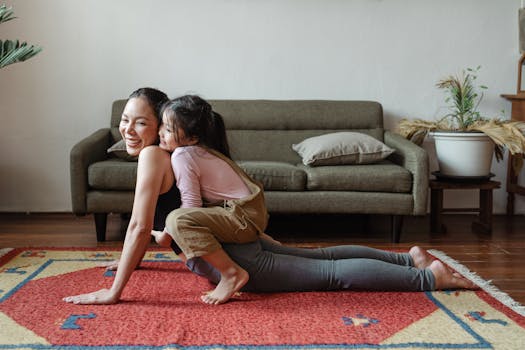
Beginner’s Guide to Yoga: Poses and Practices to Start Your Journey
Takeaways: This guide will introduce you to the basics of yoga, including foundational poses, essential practices, and tips to help you begin your yoga journey with confidence and ease.
Yoga is more than just a workout; it’s a holistic approach to wellness that encompasses physical, mental, and spiritual health. If you’re a beginner looking to explore the world of yoga, this guide will provide you with the fundamental poses and practices to help you get started. Whether you are looking to improve your flexibility, reduce stress, or enhance your overall well-being, yoga has something to offer everyone.
Understanding Yoga: A Brief Overview

As you begin your yoga journey, it’s essential to understand the core principles of the practice:
- Mindfulness: Yoga encourages being present and aware of your body and breath.
- Breath Control: Pranayama techniques help calm the mind and improve focus.
- Flexibility and Strength: Regular practice increases flexibility and builds strength.
- Stress Relief: Yoga is known for reducing stress and promoting relaxation.
Essential Yoga Poses for Beginners

1. Mountain Pose (Tadasana)
This standing pose helps improve posture and balance. Stand tall with feet together, arms at your sides, and focus on grounding your feet into the earth.
2. Downward Facing Dog (Adho Mukha Svanasana)
A staple in many yoga styles, this pose stretches the entire back body and strengthens the arms and legs. Start on your hands and knees, lift your hips, and straighten your legs.
3. Child’s Pose (Balasana)
A restorative pose that is great for relaxation. Kneel on the mat, sit back on your heels, and stretch your arms forward on the ground while resting your forehead on the mat.
4. Warrior I (Virabhadrasana I)
This pose builds strength and stability. Step one foot back, bend the front knee, and raise your arms overhead while keeping your chest open.
5. Cat-Cow Stretch (Marjaryasana-Bitilasana)
This dynamic stretch warms up the spine and improves flexibility. Alternate between arching your back and rounding it while on all fours.
For detailed instructions and visual guides for these poses, you can check out Yoga Journal.
Establishing a Yoga Practice
Starting a yoga practice doesn’t have to be daunting. Here are some tips to help you establish a consistent routine:
1. Set Realistic Goals
Decide what you want to achieve with your yoga practice. Whether it’s improving flexibility, decreasing stress, or enhancing strength, having clear goals can keep you motivated.
2. Create a Dedicated Space
Having a designated area for your practice can make it more enjoyable. Find a quiet space where you can roll out your mat and focus on your practice without distractions.
3. Start with Short Sessions
If you’re new to yoga, start with shorter sessions (15-20 minutes) and gradually increase the duration as you become more comfortable.
4. Incorporate Breathing Exercises
Breath control is essential in yoga. Incorporate pranayama into your practice to enhance relaxation and focus. Try simple techniques like deep belly breathing.
5. Join a Class or Online Session
Consider joining a local yoga class or an online session to receive guidance from experienced instructors. This can also help you connect with others on a similar journey.
For online resources, visit YogaGlo for classes that cater to beginners.
Conclusion
Embarking on your yoga journey can be a transformative experience for both your body and mind. By starting with essential poses and establishing a consistent practice, you’ll be well on your way to enjoying the numerous benefits of yoga. Remember to listen to your body, be patient with your progress, and most importantly, enjoy the journey. For more information on various yoga styles and practices, check out Yoga Journal and DoYouYoga.





